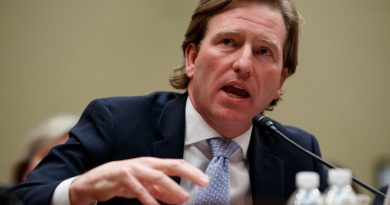Gallup poll shows largest increase in Democratic Party affiliation in a decade
More Americans identify as Democrats than Republicans by a margin that hasn’t been seen in a decade, according to a report released by Gallup on Wednesday.
An average of 49% of adults age 18 and older reported Democratic Party affiliation or said they are independent with Democratic leanings throughout the first quarter of 2021, the pollster reported. The survey was conducted by phone from January-March.
In comparison, 40% of adults identified as Republican or Republican-leaning. The 9% difference is the Democrats’ largest advantage since the fourth quarter of 2012, according to the report.
The remaining 11% of respondents were political independents with no partisan leanings.
Democrats have typically held a 4 to 6 point advantage over Republicans. Shortly before the first quarter of the year, the gap in affiliation was virtually nonexistent before Democrats’ advantage widened by 9%.
The report also noted a 6% increase in independents; from 38% in the fourth quarter of 2020 to 44% in the first quarter of 2021. It’s the highest percentage since 2013, when 46% of survey respondents identified as independents. The rise correlates with the decline in Republican Party identification, just as in 2013, when the GOP saw a drop in the popularity during the government shutdown over the Affordable Care Act.
Party identification is asked on every survey Gallup conducts, according to senior editor Jeff Jones, who also authored the report.
“It’s something that we think is important to track to give a sense to the relevant strength of the two parties at any one point in time and how party preferences are responding to events,” Jones told USA TODAY.
The poll’s margin of sampling error was plus or minus 2 percentage points.
Events encourage party loyalty, Jones said. Gallup’s latest measurements on political affiliation were taken during President Joe Biden’s inauguration — days after supporters of former President Donald Trump attacked the U.S. Capitol building on Jan. 6.
“I think we’re seeing a similar dynamic with Trump leaving office, again with the very low approval rating and (the excitement around) Biden coming into office,” Jones said.
Trump ended his presidency with a 29% job approval rating — his lowest ever while in office, USA TODAY earlier reported.
The passing of the COVID-19 relief package in March, a decline in new infections and deaths from the coronavirus and the push for mass vaccinations preceded a rise in affinity for the Democratic Party, according to Gallup.
Fewer people are dying from COVID-19 thanks to vaccination efforts targeting vulnerable populations. But the U.S. continues to report high levels of cases.
Past jumps in party affiliations
The bump in Democratic affiliation following Biden’s inauguration mirrors that of former President Barack Obama’s first term, Jones said.
“That was really the high point that we’ve seen; kind of the 2006-2009 period, when really the majority of Americans either identified as Democrats outright or were independents but they leaned toward the party,” he said. “Our data on this only goes back to the ’90s, but it’s pretty much the only time we consistently had one party with the majority of Americans on their side.”
Republican advantages, though rarer and more short-lived, followed the Gulf War in 1991 — when George H.W. Bush was in office — and the 9/11 terrorist attacks during President George W. Bush’s term, according to Gallup. More people also reported GOP affiliation after the 1994, 2010 and 2014 midterm elections.
Whether the Republican Party can regain advantage during the 2022 midterm elections may rely on the successes of the Biden administration, according to Jones.
“A lot of it is going to depend on how things go over the course of the year. If things get better with the coronavirus and the economy bounces back and a lot of people expect Biden can keep relatively strong approval ratings, then that will be better for the Democrats,” Jones said. “But if things start to get worse — unemployment goes up or coronavirus gets worse — then his approval is going to go down. It’s going to make things a lot better for the Republican Party for the midterm next year.”
Source: Read Full Article

